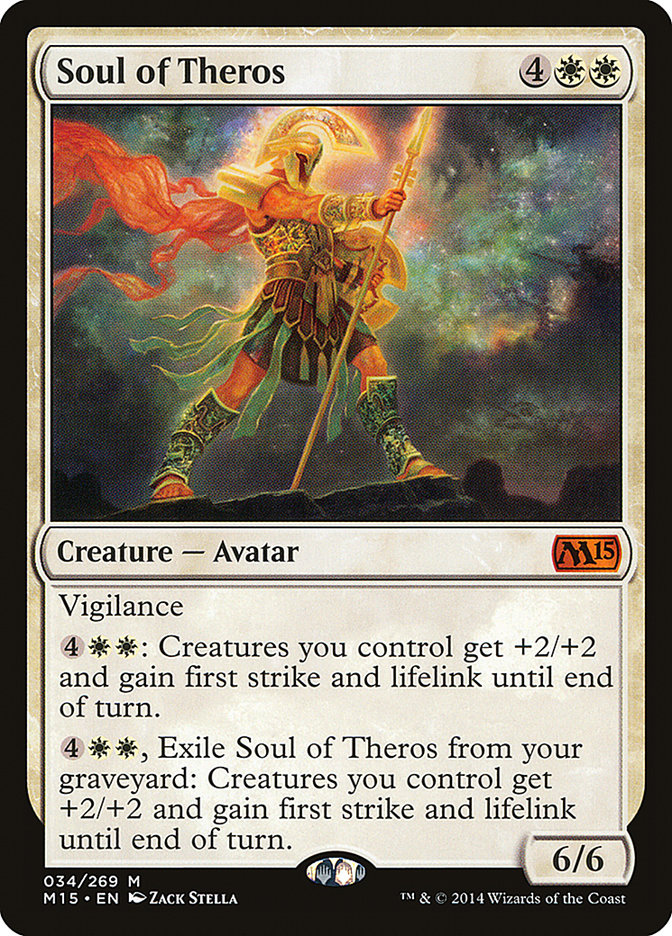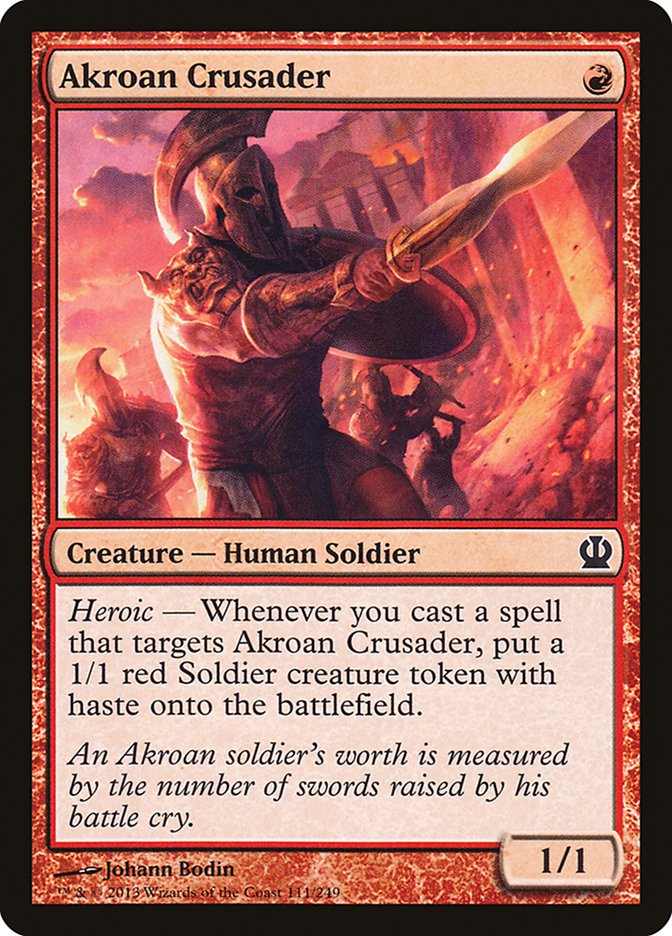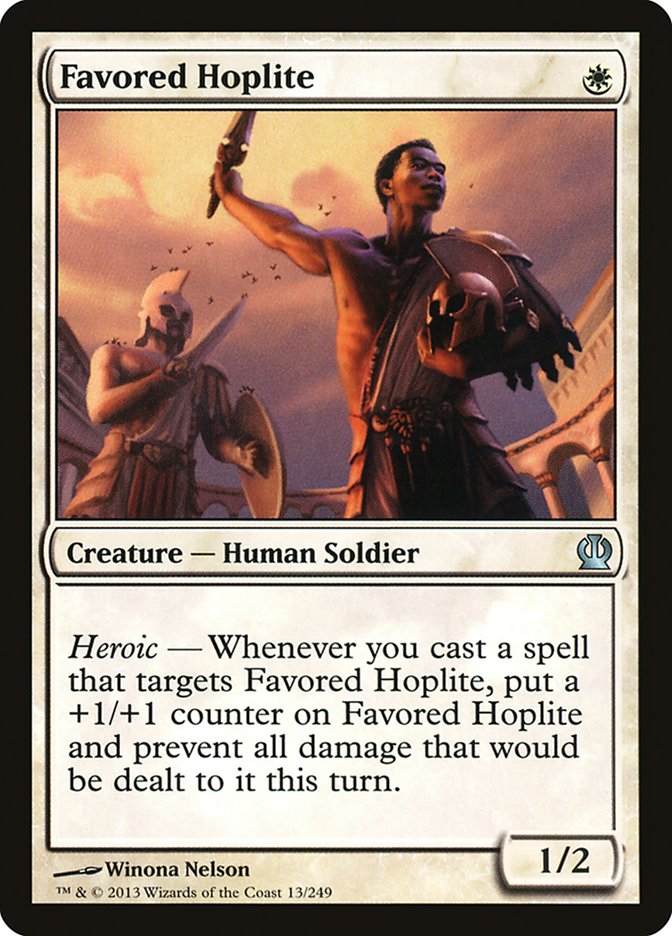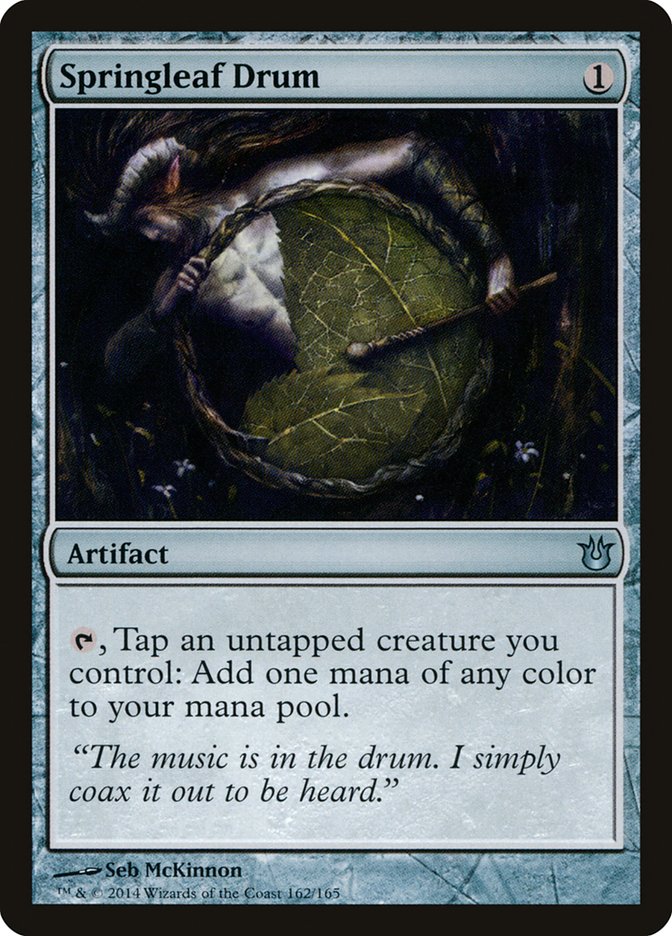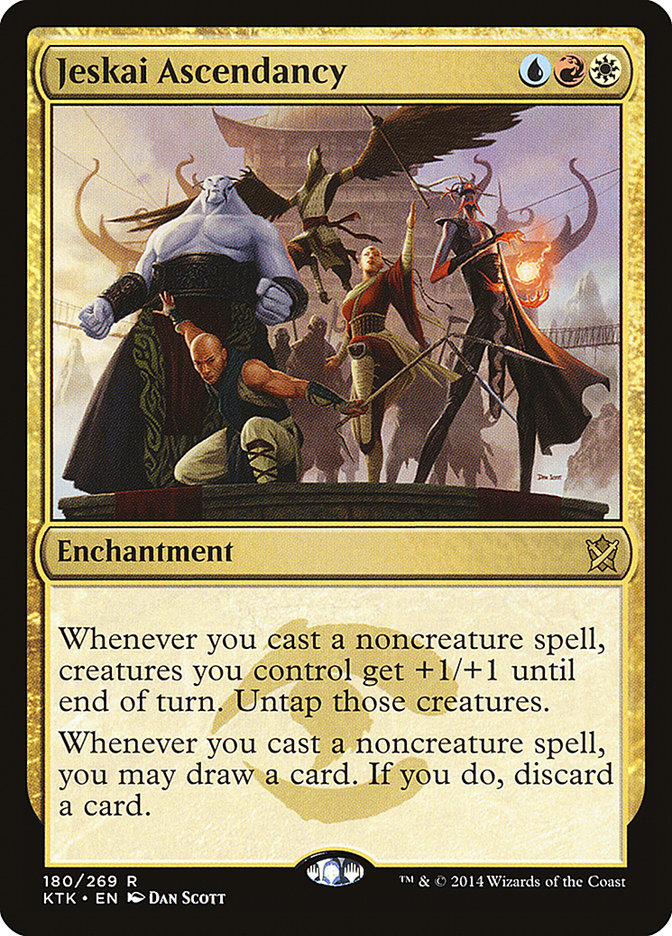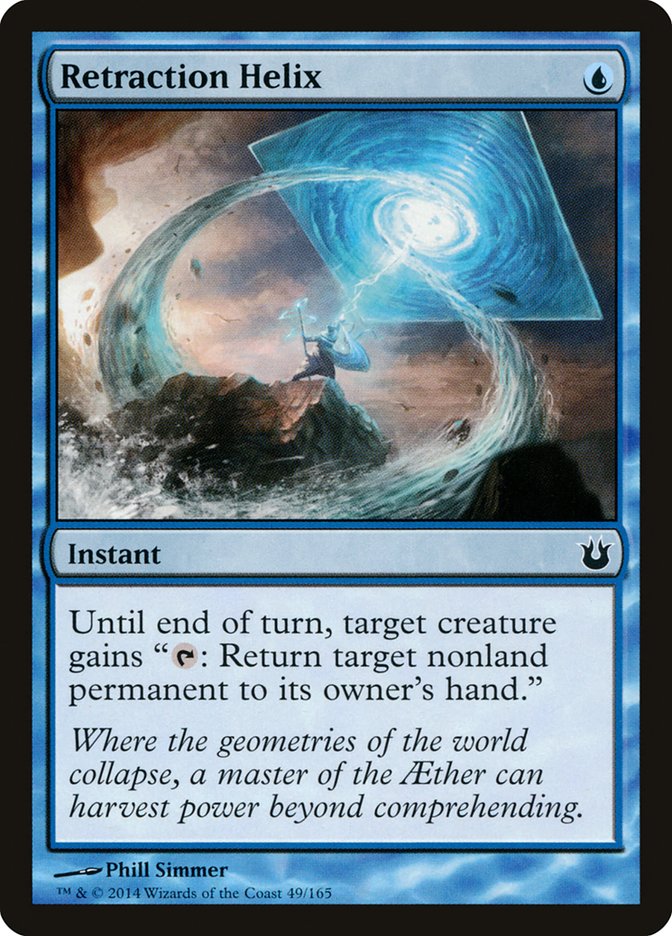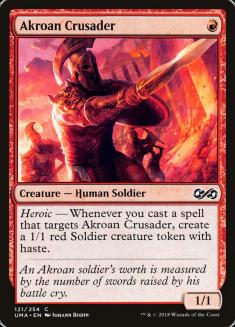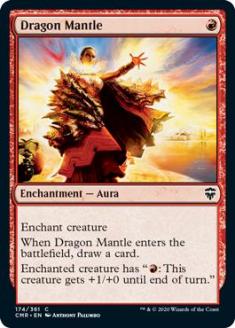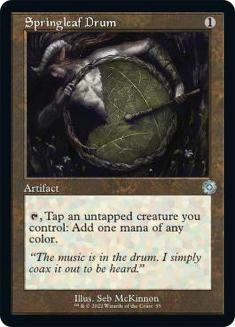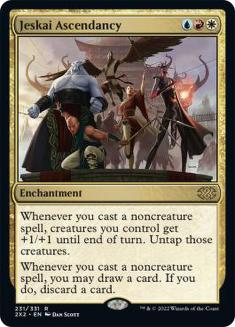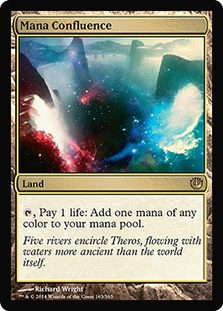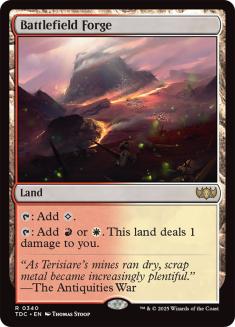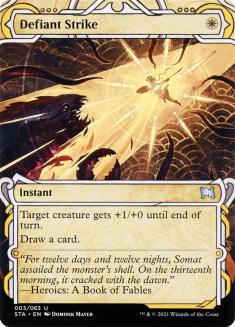Remember last year’s Standard? Remember how the finals of Pro Tour Theros was a Mono-Blue Devotion mirror match? And Mono-Black Devotion won the next Grand
Prix, U/W Control popped up a bit later, and then we spent the entire rest of the format with pretty much those same three decks winning every major event?
Yeah, this Standard is nothing like that one.
Just last week, we saw the emergence of B/G Constellation and Sultai Reaninator decks in Stockholm, with those archetypes making up nearly half of the Top
8, even if the winner was ultimately a fairly typical Jeskai deck. This week, at Grand Prix Santiago, a totally new take on the Whip of Erebos/Hornet Queen
strategy took the title, while Temur put three into the Top 8! And at the Standard Open in Oakland…well, you have to see it to believe it.
Let’s take a look at the Santiago results first.
Creatures (27)
- 3 Hornet Queen
- 2 Elvish Mystic
- 4 Sylvan Caryatid
- 4 Courser of Kruphix
- 4 Satyr Wayfinder
- 1 Eidolon of Blossoms
- 2 Doomwake Giant
- 3 Soul of Theros
- 4 Siege Rhino
Lands (23)
Spells (10)

Eduardo’s deck is an amalgamation of several of the prominent strategies in the Standard format – Abzan Midrange and B/G Constellation. It almost looks
like he took a B/G Constellation deck and an Abzan Midrange deck and shuffled them together. But there is one card here that we have not seen show up
before – outside of Limited games, that is – and it helped carry Eduardo to his championship.
All of the Souls were powerful in the M15 Draft format, but none so potent as Soul of Theros. In any kind of stalemate situation, if one player eventually
dropped Soul of Theros, it became almost impossible for their opponent to win. The +2/+2 bonus the Soul could provide meant combat would always go its
controller’s way, and the lifelink portion of the activation made racing impossible. And even if the opponent managed to kill it, the player with Soul of
Theros could always get one last activation out of the graveyard.
Well, it turns out all of those things are true in Standard as well. Sure, the format is fast enough that Soul doesn’t always get a chance to land in time
to dominate a game, and there are better tools to get rid of it once it’s in play – including cards like Abzan Charm and Utter End that prevent graveyard
shenanigans. But in a world where Siege Rhino and Coursers of Kruphix are frequently staring one another down, Soul of Theros offers the very same ability
to break a stalemate wide open.
The best part is that Eduardo doesn’t even have to draw it! While the other B/G Constellation decks we have seen use Satyr Wayfinder and Commune with the
Gods to find creatures to return with Whip of Erebos and fuel to delve Murderous Cut, this deck has the added bonus of periodically ending up with Soul of
Theros in the graveyard without ever having to cast it. That can lead to some absolutely huge swings, especially if you’ve managed to get a Hornet Queen
into play first.
Eduardo makes room for the Souls by only fitting a minor constellation package, with just one Eidolon of Blossoms and two copies of Doomwake Giant. I don’t
know his exact thought process, but I actually kind of like the result. After the results of Stockholm, with Constellation decks placing quite highly, I
would have expected to see a reasonable amount of enchantment hate this week. Looking through the rest of the Top 8 lists, there are not only Reclamation
Sages here and there, but even a few copies of Back to Nature!
By keeping his Constellation package to a minimum, Eduardo could potentially get his opponents to sideboard in these cards against him, which ultimately
prove to be less effective than they might expect in games 2 and 3. I’m not entirely sold that it makes sense to play a single copy of Eidolon of Blossoms,
but Doomwake Giant is strong enough on its own, especially in a world of Hornet Queens, that the payoff can still be worth it.
I’m not sold that this deck has what it takes to be a long-term contender, but I would not be surprised to see its success cause people to take another
look at what the Souls might have to offer.
Speaking of a deck proving itself to be the real deal, Temur managed to take three of the Top 8 spots in Santiago after its finals appearance in Stockholm.
Two of the lists were pretty much exactly what I suggested in my article after Grand Prix LA, give or take a few sideboard cards, while the
third was more of an aggro/ramp hybrid, featuring Goblin Rattlemaster, Stormbreath Dragon, and quite a few more planeswalkers in the place of Heir of the
Wilds, a few Boon Satyrs, and some of the spells.
I don’t want to spend much time waxing poetic about the power of bear punching, especially with blades on your knuckles, but it’s clear Temur has what it
takes to compete on the big stage. If beating down is your thing, be sure to check it out!
Creatures (26)
- 3 Elvish Mystic
- 3 Polukranos, World Eater
- 4 Boon Satyr
- 4 Rattleclaw Mystic
- 4 Heir of the Wilds
- 4 Savage Knuckleblade
- 4 Ashcloud Phoenix
Planeswalkers (1)
Lands (24)
Spells (9)

Creatures (27)
- 3 Elvish Mystic
- 4 Polukranos, World Eater
- 4 Boon Satyr
- 4 Rattleclaw Mystic
- 4 Heir of the Wilds
- 4 Savage Knuckleblade
- 4 Ashcloud Phoenix
Planeswalkers (1)
Lands (23)
Spells (9)

Creatures (26)
- 4 Elvish Mystic
- 3 Polukranos, World Eater
- 1 Sylvan Caryatid
- 4 Stormbreath Dragon
- 2 Boon Satyr
- 4 Goblin Rabblemaster
- 4 Rattleclaw Mystic
- 4 Savage Knuckleblade
Planeswalkers (4)
Lands (23)
Spells (7)

But none of these are really the big story of last weekend. While Soul of Theros is awesome, and I’m pumped to see Temur putting up great results, the deck
that really rocked the Standard format didn’t show up at the Grand Prix at all. It took the title at the Standard Open in Oakland, in the hands of Ivan
Jen.
Creatures (16)
- 4 Akroan Crusader
- 4 Favored Hoplite
- 2 Lagonna-Band Trailblazer
- 2 Seeker of the Way
- 4 Monastery Swiftspear
Lands (18)
Spells (26)
- 4 Springleaf Drum
- 4 Gods Willing
- 4 Dragon Mantle
- 4 Retraction Helix
- 2 Jeskai Charm
- 4 Defiant Strike
- 4 Jeskai Ascendancy
Sideboard

Look at that deck. Now look at it again. Do you get it yet? Because it took me a while to figure out what’s actually going on here.
Ivan’s deck is a thing of beauty. If the GP Santiago winning deck is a cross between Abzan Midrange and B/G Constellation, this is a cross between Jeskai
Ascendency Combo and U/W Heroic. But both Jeskai Ascendancy and U/W Heroic are more combo decks than anything, which makes this a lot like Thopter Depths
or Cephalid Life, two powerful and dominant decks from years gone by.
So here’s how this deck works. You need:
And now your opponent is dead.
Wait, what?
Okay, let me explain. You have two untapped creatures in play, along with Jeskai’s Ascendancy and Springleaf Drum.
You tap one of the creatures for mana with Springleaf Drum, and cast Retraction Helix targeting the other one.
Helix resolves, and both of your creatures untap from the Jeskai Ascendancy trigger. They also get +1/+1, and you draw and discard a card.
Now you use the creature with Retraction Helix on it to bounce the Springleaf Drum.
Then you replay Springleaf Drum, which untaps both of your creatures.
Then you tap non-Helix’d creature for mana, then bounce the Drum with the Helix’d creature.
Then you replay Springleaf Drum, which untaps both of your creatures.
See where this is going?
You end up with infinite +1/+1 triggers from Jeskai Ascendancy, making your creatures arbitrarily large, and you can repeatedly draw and discard to find
something like a Gods Willing to force your attackers through any defense your opponent might be able to muster.
“But we’ve already seen Jeskai Ascendancy combo decks! This is nothing new! People played them at the Pro Tour and got stomped!”
That’s true, hypothetical objection man! But pretty much all of the Jeskai Ascendancy decks we’ve seen before this point were dedicated combo decks that
could only win through going off. They were entirely reliant on assembling a particular combination of card to have any hope of winning a game. If their
Jeskai Ascendancies or whatever other combo pieces were all in the bottom half of the deck? Often, they simply could not win.
This deck though, can play out simply as a Heroic deck when the combo doesn’t come together. Favored Hoplite alongside Dragon Mantle, Defiant Strike, and
Gods Willing can kill an opponent very quickly on its own.
Not only that, but this deck can actually honestly use Jeskai Ascendancy when it isn’t going infinite! Akroan Crusader in particular is a serious
customer when every spell you cast gives all of your creatures +1/+1.
Imagine the following draw.
On the first turn, you can play either Akroan Crusader or Springleaf Drum – it doesn’t really matter. Then, on the second turn, you play whichever you
didn’t play on the first, and then use the drum for mana to cast Dragon Mantle on your Crusader, making a soldier to attack for one.
On your next turn, if you draw a land, you can play Ascendancy, and then use the drum to play Defiant Strike on your Crusader. You can choose to stack the
triggers such that you get a 1/1 before Ascendancy triggers, so you can immediately attack with a now 2/2 hasted creature. From that point on, every
non-creature spell you cast is +1/+1 to your team, and every one of them that targets the Crusader means yet another creature on that team. Something as
simple as Gods Willing plus a second Dragon Mantle to follow up means your opponent is dead on turn 4 – even without the combo!
I have to say – even though this really isn’t the style of deck I typically play and enjoy myself, I’m super impressed by the ingenuity that went into
building this list. It’s always exciting to see someone pull together such seemingly diverse elements into a deck that not only functions, but excels.
If you’re looking to fight against this deck, your best bet is cheap removal, like Lightning Strike or Magma Jet, particularly alongside disruption like
Thoughtseize. I’d imagine this deck would have a really rough time against something like Mardu, especially one with access to Anger of the Gods. Both the
Heroic and combo directions the deck can take need to keep creatures in play to be effective, and you can only protect so many of them with Gods Willing.
It’s awesome to see that even a month into a new Standard format, totally new decks are still cropping up left and right, and not only just putting up Top
8 finishes, but outright winning big events. We’ve seen new contenders at pretty much every major event since Khans of Tarkir came out, and I’m looking
forward to seeing what the next few tournaments hold.
What will the next breakout deck turn out to be?

